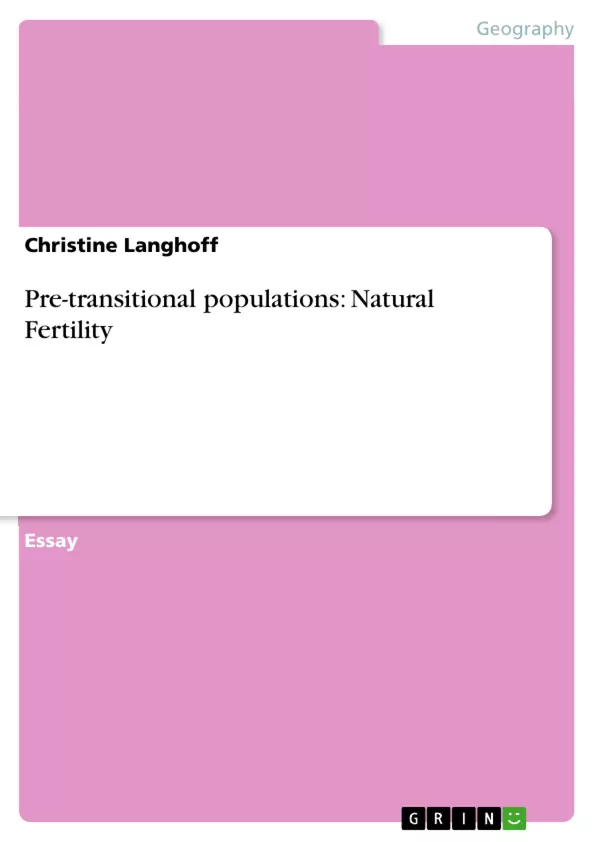Fertility is directly determined by so-called intermediate fertility variables or proximate determinants which are, in turn, affected by indirect determinants such as socio-economic, cultural and environmental variables. Many different proximate determinants influence fertility and the relationship between them and the level of fertility can be analysed using a comprehensive model. The result of this analysis shows that variations in four factors – marriage, contraception, lactation and induced abortion – are the primary proximate causes of fertility differences among populations. While fertility variations can always be traced to variations in one or more of the intermediate variables, the scope for variation differs among the variables as does their degree of influence in different societies and over time within societies.
Inhaltsverzeichnis (Table of Contents)
- Pre-Transitional Populations II: Natural Fertility
- Proximate Determinants of Fertility
- Exposure Factors
- Susceptibility Factors
- Marriage as a Proximate Determinant
- Contraception and Marital Fertility
- Induced Abortion and Fertility
- Lactation and Fertility
Zielsetzung und Themenschwerpunkte (Objectives and Key Themes)
This text aims to explore the concept of "natural fertility" in pre-transitional societies, examining the proximate determinants of fertility and how they influence population growth. It delves into the complexities of measuring fertility levels, considering factors such as marriage patterns, contraceptive practices, induced abortion, and lactation.
- Defining "Natural Fertility" and its Controversies
- Analyzing Proximate Determinants of Fertility
- The Influence of Social and Cultural Factors
- Contrasting Fertility Levels in Different Societies
- The Role of Modernization in Fertility Patterns
Zusammenfassung der Kapitel (Chapter Summaries)
- The text begins by outlining the concept of "natural fertility," which refers to populations where couples do not practice deliberate fertility control. It explores the debate surrounding this concept and its limitations, noting the influence of various direct and indirect determinants on fertility levels.
- The chapter then delves into the proximate determinants of fertility, categorizing them as exposure factors and susceptibility factors. It discusses the impact of marriage patterns on fertility, including the proportion of women married at various ages and the effects of marriage dissolution. The chapter also highlights the influence of factors like lactational infecundability, fecund waiting time, and the prevalence of pathological sterility.
- The impact of contraception on marital fertility is examined, showcasing the role of contraceptive practices in regulating fertility levels. The text explores the difficulties in measuring the prevalence of contraception due to limited data and the simplifying assumptions used in calculating relevant indexes. It also discusses the potential for "natural fertility" levels to be higher in societies with higher contraceptive use, suggesting a complex interplay of factors.
- The text concludes by exploring the role of induced abortion in fertility regulation. It emphasizes the challenges of accurately measuring the prevalence of induced abortion and its impact on fertility, considering factors like the number of births averted per induced abortion and the influence of contraceptive practices after induced abortion. The chapter acknowledges the importance of considering the interplay of these factors to obtain a comprehensive understanding of fertility patterns.
Schlüsselwörter (Keywords)
The core themes and concepts of this text revolve around pre-transitional populations, natural fertility, proximate determinants of fertility, marriage patterns, contraception, induced abortion, lactation, and the influence of social, economic, and cultural factors on fertility levels. The text aims to contribute to a deeper understanding of population dynamics and the interplay of various factors influencing fertility in different societies.
- Quote paper
- BA (Oxon), Dip Psych (Open) Christine Langhoff (Author), 2002, Pre-transitional populations: Natural Fertility, Munich, GRIN Verlag, https://www.grin.com/document/4696



